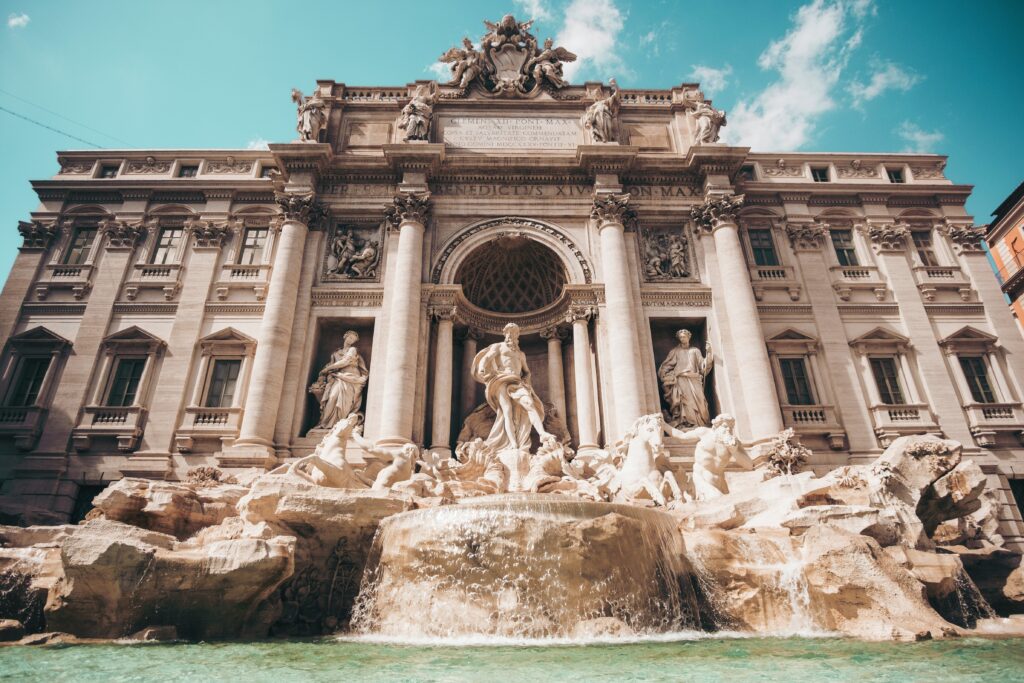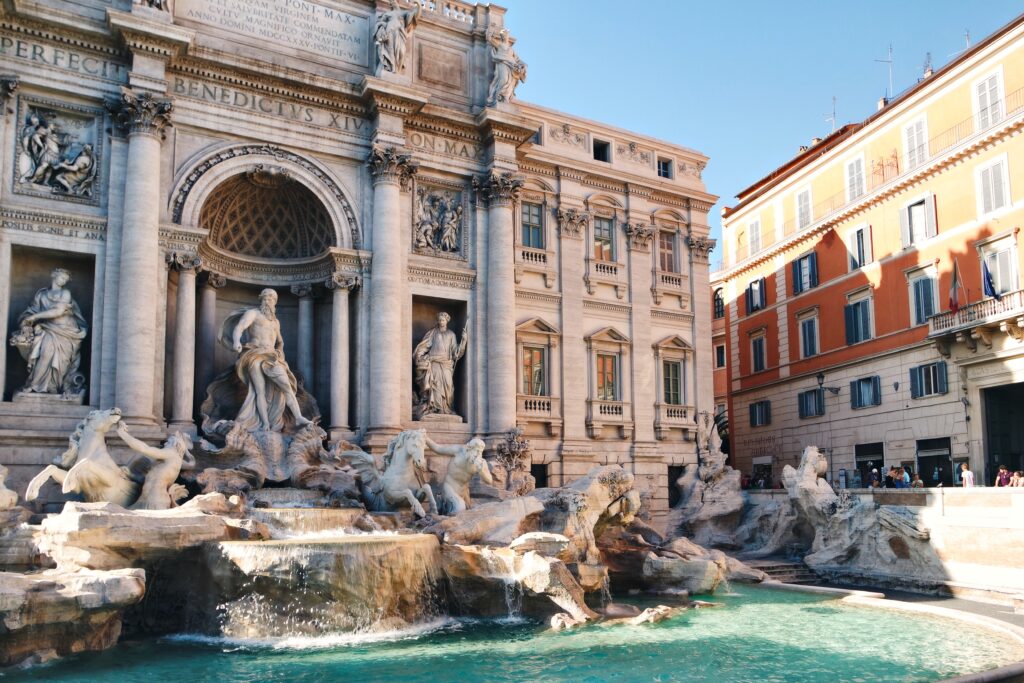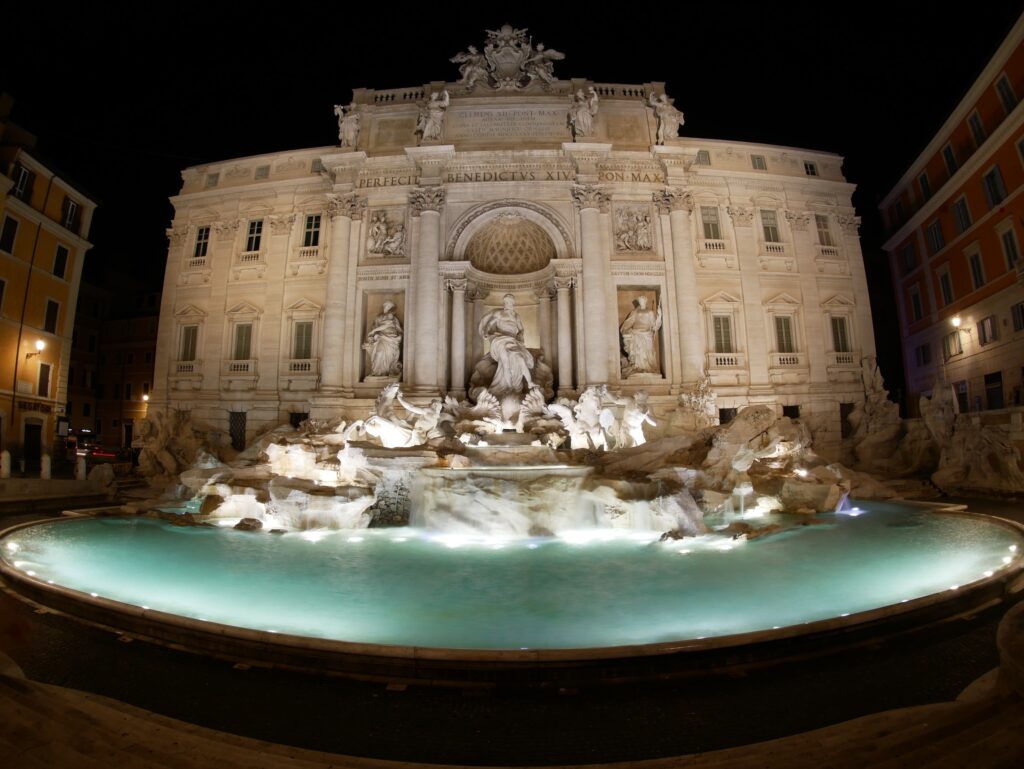Legend says to throw a coin in the Trevi Fountain so you will return to it one day. It’s well worth it to visit while in Rome though because of the fountain’s rich history. Visitors flock to the fountain to view the remarkable 85-foot high (65 feet wide) example of Baroque art, designed by Nicola Salvi. Wait, I’m getting ahead of myself. There’s so much more to this landmark!
Side note: This is part of my 12-part series of travel posts all summer long! All my travel posts including this series and all posts from the last 12 years can be found here. But all my August posts are specifically about places in Italy.
The Trevi Fountain is believed to have been built on the site of a Roman aqueduct, the Aqua Virgo, which was constructed in 19 BC to provide water to the city of Rome. The fountain was said to have been built where the Aqua Virgo ended, marking the end of the aqueduct and the beginning of the distribution network. During the Middle Ages, the area around the Trevi Fountain became dilapidated and was used as a cemetery. The fountain itself was used as a source of water for animals and was largely forgotten. Can you believe it? One of Rome’s most photographed places was not revered like it is today. In the early 16th century, Pope Nicholas V decided to refurbish the Trevi Fountain, commissioning the architect Bernini to design a new fountain. Bernini’s design was never completed, and the project was eventually abandoned. In the late 17th century, Pope Innocent XIII commissioned the architect Nicola Salvi to design and build a new fountain at the site of the Trevi Fountain. Salvi’s design was inspired by the Baroque style and incorporated classical elements, such as the chariot of Neptune, the god of the sea. The fountain was completed in 1762.

The Trevi Fountain is one of the most popular tourist attractions in Rome, and it can get very crowded, especially during the high tourist season from June to August. If you prefer to avoid crowds, it’s best to visit in the early morning or late afternoon, when fewer people are around. Though the Trevi Fountain is beautifully lit at night and visiting after dark can provide a different and enchanting experience, this is also when the crowds can be the largest, so be prepared for a more crowded experience. There is a little ice cream shop adjacent to the fountain that has a yummy selection so you can stroll around and enjoy a sweet treat while trying to work your way to the front of the crowd. Regardless of when you visit, the Trevi Fountain is a magnificent sight that is sure to leave a lasting impression.
The Trevi Fountain has since become one of the most famous landmarks in Rome and one of the most popular tourist destinations in the world, but this was centuries in the making. I like that so much because it is a reminder that nothing is an overnight success. It takes work and rework and a lot of planning and good timing. After all, Rome wasn’t built in a day.

Side note: This is part of my 12-part series of travel posts all summer long! All my travel posts including this series and all posts from the last 12 years can be found here. But all my August posts are specifically about places in Italy that I’ve visited.

